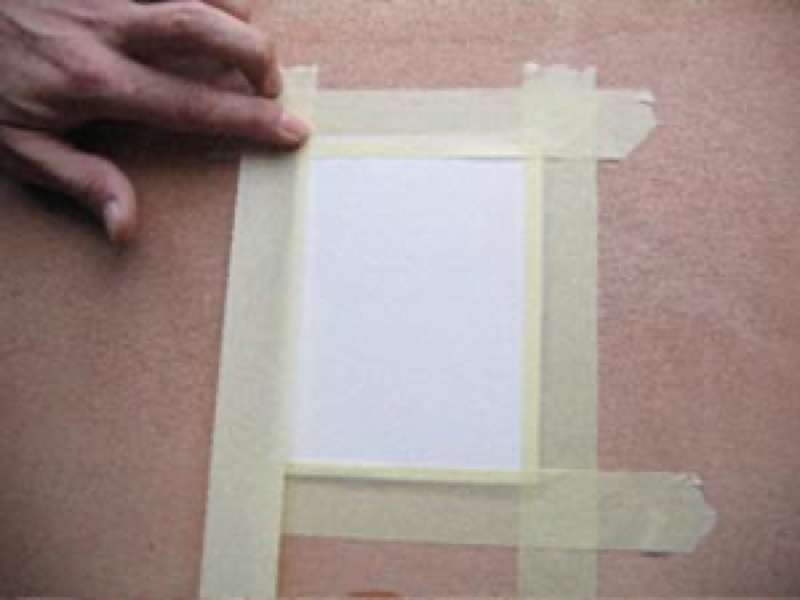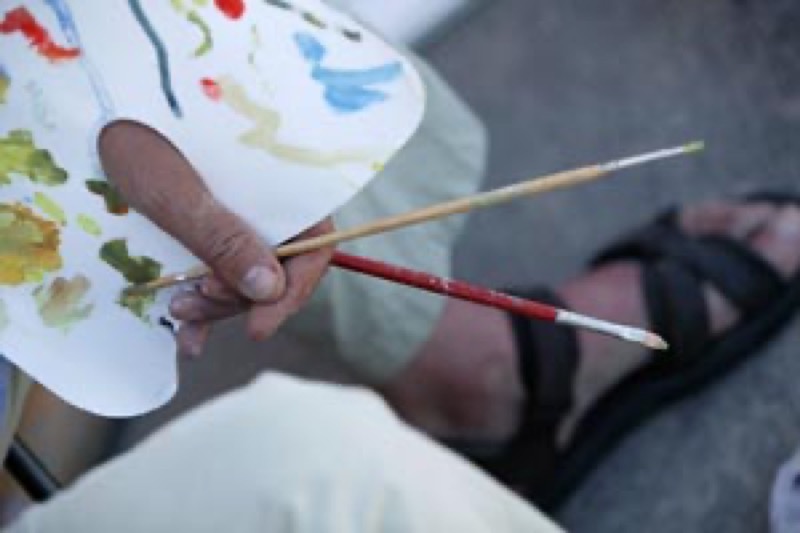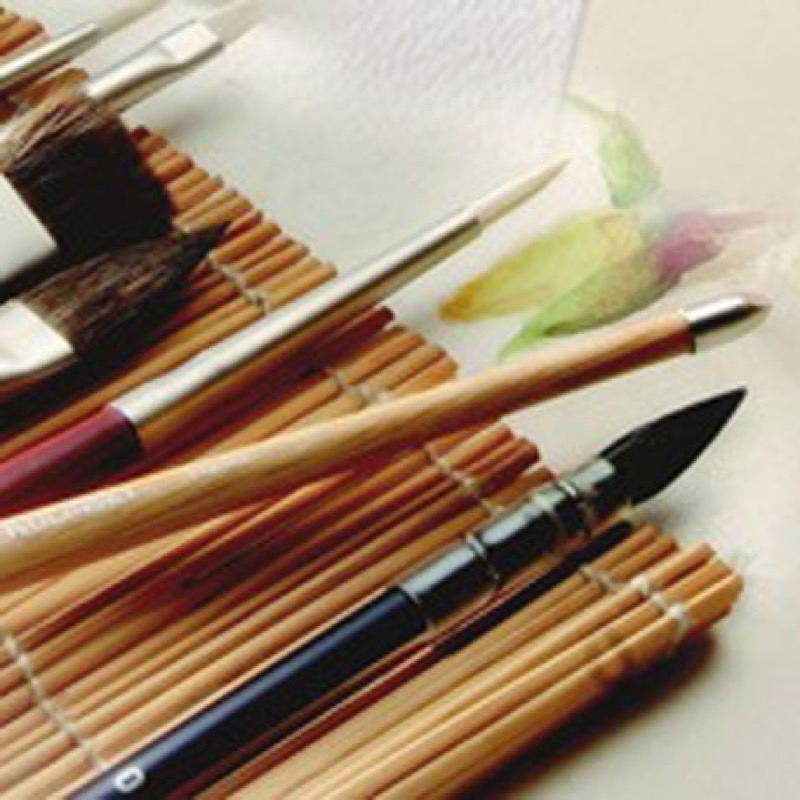Although there is no time limit for adding a series of layers of gouache, you'll be better off giving your imagination free rein while you have all your materials available, within easy reach!

1. Before starting to work
Stretching the paper
This step is necessary if you are using loose sheets of paper with grammage under 300g/m². Moisten both sides of the sponge. Next, attach the edges onto a drawing board with strips of gummed (or adhesive) paper. You can also staple or tack the sheet of paper to the back of a frame.
Hoisting the colors
Spend a few minutes selecting the shades you plan on using. Try to plan the amounts you'll need, including for blending, because trying to recreate a shade later on is always risky.

Preparing your ideal palette
There is no single way to arrange your gouaches. With a little practice, you will intuitively adopt the method that works best for you:
- by sequence of use,
- by separating warm shades (yellow, orange, red…) from cool ones (green, blue…),
- by placing the colors you are planning on combining side by side.
Practical advice: Dare to think ahead!
Nothing prevents you from preparing your colors before starting to work.
And when using your paints:
Stir vigorously with a paintbrush to restore blends that tend to separate
To loosen up overly dry gouache, spray it with a little water, to which you can add some gum arabic.
Have you thought of everything?
Check one last time before getting started so you don’t have to run a lot of extra errands! Plan on:
-extra sheets for tests (a spiral pad with the same grammage as your paper, for example),
-your paintbrushes and all your favorite tools (toothbrush, palette knife, sponge, rags…),
-one or two cups for water.

2. When you've finished working
Since gouache is done with water, cleaning up afterwards is a lot easier. However, you should never neglect this step … Your paintbrushes, in particular, could make you pay dearly for it!
Your palette
Rinse with clear water and rub a sponge over any dry residue; use a little household soap, if needed, because some very strong pigments will leave traces. Wipe with a rag or absorbent paper.
Your paintbrushes
Rinse the bristles thoroughly in a container of warm or hot water. Shake them out over a sheet of absorbent paper to make sure there's no color left in the brush. If necessary, gently shampoo the brush with paint brush cleaner.
Next, shake the paintbrush vigorously to remove as much water as possible. Wipe the metal ferrule to keep it from rusting.
Smooth the bristles with your fingers to return it to its original shape.
Lay down flat and leave to dry in the open air.
Keep in mind
Store your paintbrushes in a jar, bristle end up.
Your paints
Make sure to always firmly cap your tubes. Keep your gouaches in their original packaging or in an airtight container (wood or metal carrying case...)
Tip
If you don't have a dedicated place to work: Store your materials together in a large crate or, for a really practical solution, a wheeled cart with shelving!
Preserving your work
Because gouache is permeable, it can be reworked indefinitely… even several years later. However, when you believe you've finished your piece, store it flat, never rolled: it can easily crack!
you can varnish it to protect it from humidity. Under glass, it can outlast you… even if certain unstable pigments will change over the years.
Recommended product:
"C" à grain® 224 gsm
See also :
Gouache
Gouache: Selecting your material
